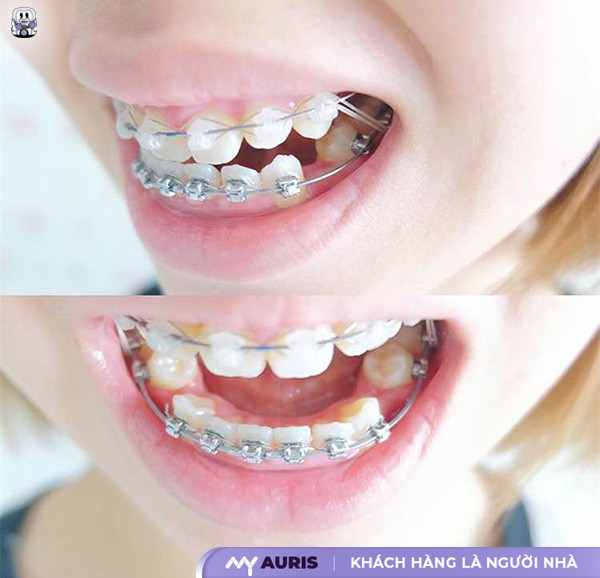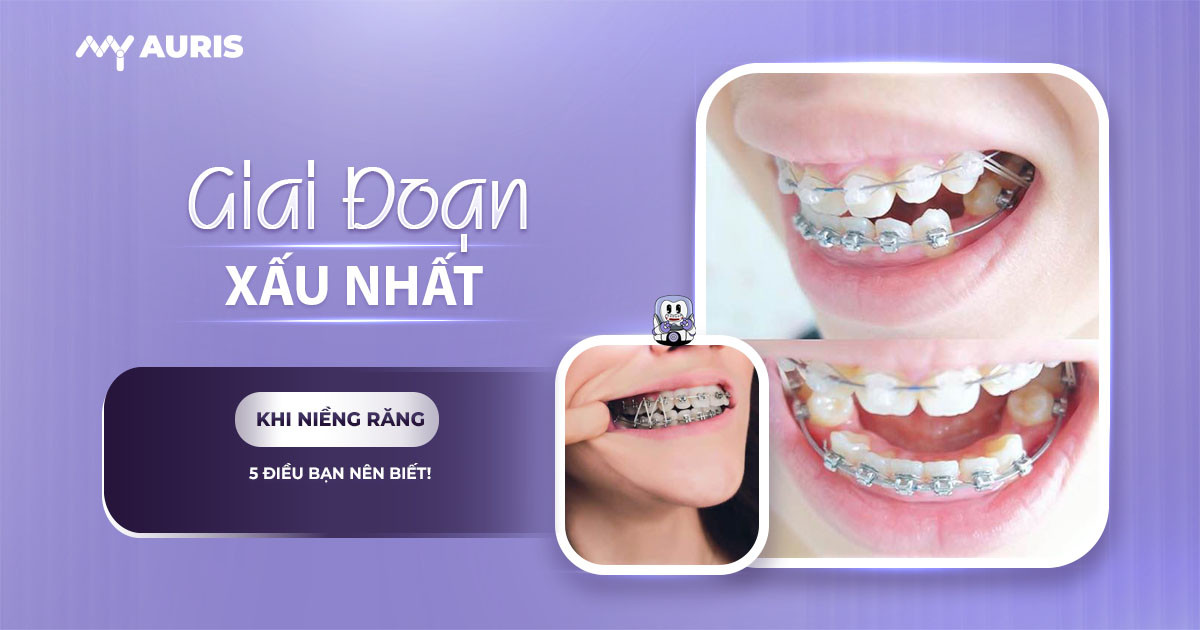The worst stage of braces typically occurs during the first 3–7 days after brackets are placed or the archwire is tightened for the first time. This is when teeth begin to shift, and the surrounding tissues experience significant pressure, causing pain, gum swelling, mouth sores, and difficulty eating. This is also the most challenging period to adapt to during the entire orthodontic treatment.
When is the Worst Stage of Braces?
The worst stage of braces typically falls within the first 3 to 7 days after brackets are attached or the archwire is adjusted for the first time. This is when the teeth begin to shift, and the surrounding tissues experience continuous pressure, leading to toothache, gum swelling, and a general feeling of tension throughout the jaw. Some individuals may also experience temporary tooth looseness, difficulty sleeping, or discomfort while eating.
The primary cause stems from the orthodontist increasing the adjustment force on the archwire, forcing the teeth to adapt to new positions within the dental arch. At this point, you may feel tension from the archwire, develop mouth sores due to friction with the braces, and even experience soft tissue inflammation around the brackets if not cleaned properly.
During this stage, you haven’t yet fully adjusted to the orthodontic appliances such as metal braces, ceramic braces, or clear aligners. Pain often concentrates in areas like the front teeth, inner cheeks, lips, and tongue, especially when chewing or brushing. Most users describe this as the period when the discomfort level is at its peak throughout the entire braces treatment.
Furthermore, psychological anxiety and mild stress also contribute to making you feel that things are worse. Eating habits are severely restricted, requiring a switch to soft foods like porridge, soup, and smoothies, which also disrupts daily life.

Common Symptoms During the Most Uncomfortable Stage of Braces
Immediately after the initial placement of brackets or orthodontic archwires, individuals undergoing treatment often enter the worst stage. This is when the body reacts to the tightening force from the orthodontic appliances. Teeth begin to subtly shift within the dental arch, creating a dull, persistent ache and tension. You can recognize the common symptoms during this period to avoid panic and provide timely, proper care:
- Toothache, archwire tension: Aching and throbbing pain are signs that your teeth are moving. This is a normal reaction and no cause for excessive worry.
- Gum swelling, soft tissue inflammation around braces: If not cleaned properly, food can easily get trapped in the appliance, causing gum inflammation. You should use a specialized toothbrush and antiseptic mouthwash.
- Mouth sores, mucosal ulcers: Due to brackets rubbing against your lips and cheeks, you can use orthodontic wax to cover sharp parts, reducing friction.
- Difficulty eating: Individuals with braces during this stage often eat less for 5-7 days. Only soft foods like porridge, soup, and smoothies should be consumed, avoiding hard or excessively hot/cold items.
- Difficulty sleeping due to archwire pain: You should use a cold compress on your cheek area or take common pain relievers such as Paracetamol or Ibuprofen as directed by your orthodontist.

Effective Pain Relief During the Worst Stage of Braces
In the first few days after brackets are placed, teeth and gums often experience mild swelling, feeling as if the teeth are loose. This is a physiological reaction as the tightening force from the brackets and archwire begins to move the teeth. To manage the pain:
Use common pain relievers such as Paracetamol or Ibuprofen as directed by your orthodontist. Do not arbitrarily increase the dosage.
Apply a cold compress to the outside of your cheek for 10–15 minutes at a time, 3 times a day, to reduce swelling and numb the painful area.
Avoid hard or sticky foods like candies, nuts, or sugarcane. Prioritize thin porridge, soup, and soft smoothies that are easy to swallow and do not put pressure on your teeth.
Do not skip meals, even if chewing is difficult. Eat small, frequent meals, and drink additional milk or nutritious juices to maintain energy.
Clean your teeth thoroughly but gently. Use a specialized toothbrush for braces, along with antiseptic mouthwash.
If you have difficulty sleeping due to archwire pain, try changing your sleeping position, elevating your head, and taking pain medication 30 minutes before bedtime.

How Long Does It Take to Get Through the Worst Stage of Braces?
You can absolutely get through this stage within approximately 7 to 10 days if you know how to care for yourself properly. According to orthodontists, most patients gradually adapt after one week, and the pain significantly decreases after the fifth day. In some cases, it may extend up to 2 weeks if there is a feeling of temporary tooth looseness, soft tissue swelling, or psychological stress.
You should choose a reputable facility like My Auris Dental Clinic – a place with a specialized orthodontic team, modern equipment, and personalized procedures. Attending appointments as scheduled and following your dentist’s instructions will help you overcome this uncomfortable stage quickly and achieve your desired results. Contact 0377.99.6879 My Auris today.





